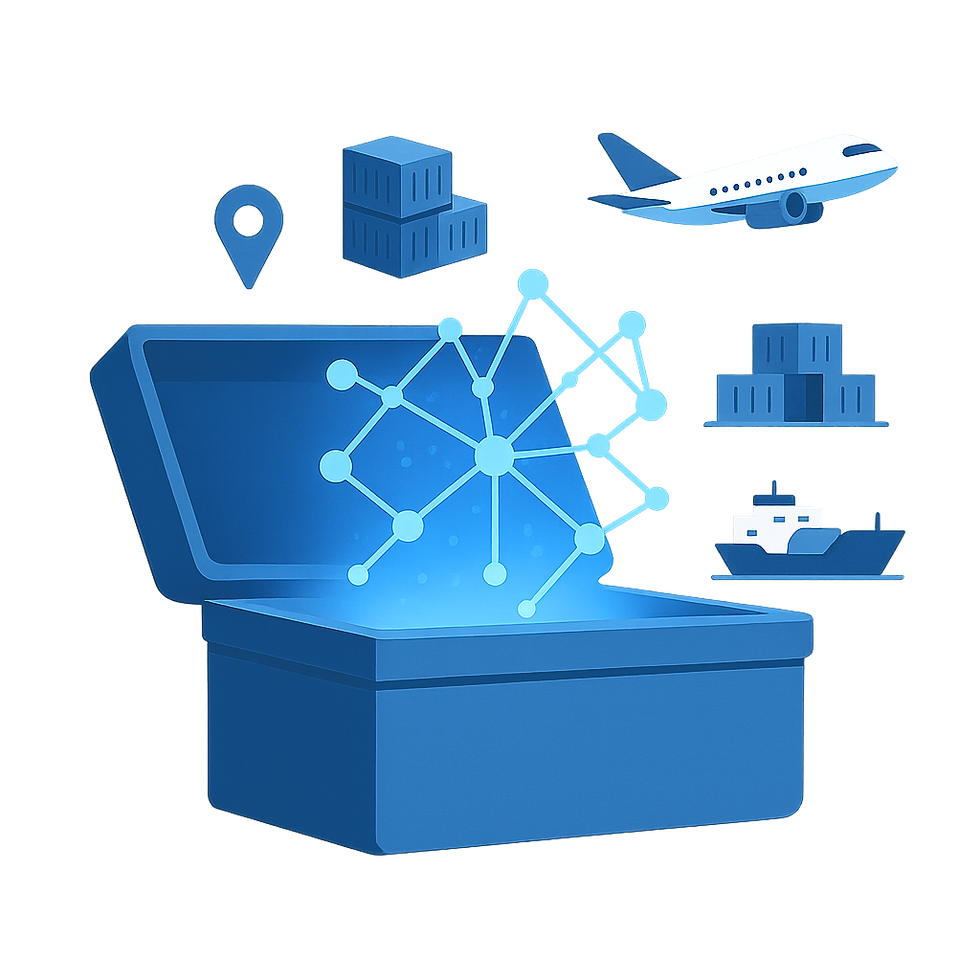Why the World Is Only Now Waking Up to AI Agents—Even If They’ve Been Around for Years
- Tomer Shamir
- 23 ביולי
- זמן קריאה 3 דקות
Understanding the delayed adoption curve of AI agents and the importance of experience in successful deployment.
In 2019, when companies like AiDock introduced intelligent AI agents into complex domains like trade compliance and logistics, the technology was ahead of its time. These agents could read documents, extract relevant data, take autonomous actions, and integrate seamlessly into existing workflows. But the market's response was muted.
AI agents weren’t new in concept—autonomous software agents date back decades—but these were different. They represented a leap toward operational AI: systems that could work side by side with humans, not just analyze data or recommend actions, but take them. And yet, few organizations were ready to trust them.
Jump to 2025, and the landscape has shifted. Industry analysts now predict the AI-in-supply-chain market alone will balloon from $9.94 billion in 2025 to $192.51 billion by 2034, driven by use cases like predictive maintenance, autonomous inventory management, and AI-augmented procurement. Leaders who once hesitated are now aggressively seeking AI solutions. What changed?
The Shift: From Innovation Fatigue to AI Fluency
1. AI Became Tangible
For years, AI was hyped—but intangible. It lived in whitepapers, not workflows. That changed with the emergence of consumer-friendly generative AI like ChatGPT and image generation tools, which helped demystify AI for everyday professionals. Suddenly, AI wasn’t just something “the tech team” dealt with—it became personal, powerful, and broadly accessible.
This leap in public AI fluency bridged the gap between awareness and understanding. Decision-makers now grasp not only what AI can do, but what it should do in their specific domain. That shift laid the groundwork for serious enterprise adoption.
2. The Trust Gap Narrowed
Early adopters often faced the burden of proof. They had to justify ROI, build internal trust, and manage expectations in the face of immature ecosystems. In contrast, today’s buyers benefit from case studies, benchmarks, and established best practices. Trust has shifted from theory to precedent.
Organizations like Amazon, Walmart, and Digital Realty have showcased AI agents at work—automating logistics, optimizing sustainability, and driving efficiency across complex operations. These proof points have turned AI from a gamble into a strategic imperative.
3. From Efficiency to Necessity
The post-2020 era introduced global shocks that made supply chain agility, resilience, and visibility more urgent than ever. AI agents—once seen as “nice to have”—emerged as critical tools for navigating volatility. From simulating disruptions to reallocating resources in real-time, AI proved its worth not in laboratory conditions, but in crisis scenarios.
This urgency has reshaped budget priorities and strategic roadmaps. Digital transformation is no longer just a buzzword—it’s a survival strategy. And AI agents, with their autonomous decision-making and scalability, are at the heart of that strategy.
Why Experience Now Becomes the Differentiator
As demand surges, so does the number of vendors claiming AI expertise. But AI deployment—especially in regulated data-rich environments—is not plug-and-play. It requires deep contextual knowledge, robust change management, and iterative refinement.
1. The Myth of Plug-and-Play AI
No matter how advanced the model, AI needs grounding in domain-specific logic, workflows, and regulatory constraints. A customs document in one country may look nothing like its counterpart elsewhere. Procurement cycles vary wildly by industry. Supply chain nuances are local and cultural.
Experienced providers have already navigated these complexities. They’ve built data pipelines, dealt with edge cases, and tuned models not just for accuracy, but for operational viability. That experiential capital is hard to replicate.
2. Change Management Is Half the Battle
One of the most underappreciated aspects of AI adoption is organizational change. Employees must learn to trust AI agents. Processes need to be redesigned. KPIs shift. Cultural dynamics evolve. Without careful onboarding and internal education, even the most powerful tool can underdeliver.
Here, seasoned implementers shine. They know that deploying an AI agent isn’t just a tech project—it’s a transformation journey. They’ve seen where teams struggle, where friction points arise, and how to build momentum.
3. Ecosystem Maturity Matters
AI doesn’t operate in a vacuum. It needs clean data, integration pipelines, governance frameworks, and human oversight. Firms with years of field experience have already built and tested this infrastructure. They’ve developed interoperability with major ERPs, customs platforms, logistics APIs, and more.
This ecosystem maturity is what separates scalable solutions from pilot purgatory.
Looking Ahead: Lessons for Late Adopters
As AI agents move from frontier tech to foundational infrastructure, new adopters face a critical decision: whom to trust and how to proceed. The temptation to chase buzzwords or over-invest
in new entrants is real—but often counterproductive.
Instead, smart organizations will prioritize partners who combine technical fluency with real-world wisdom. They’ll seek teams that not only write code but understand consequences. And they’ll invest in long-term AI capabilities—not just quick wins.
Because in the end, adopting AI isn’t about being first. It’s about getting it right.




תגובות